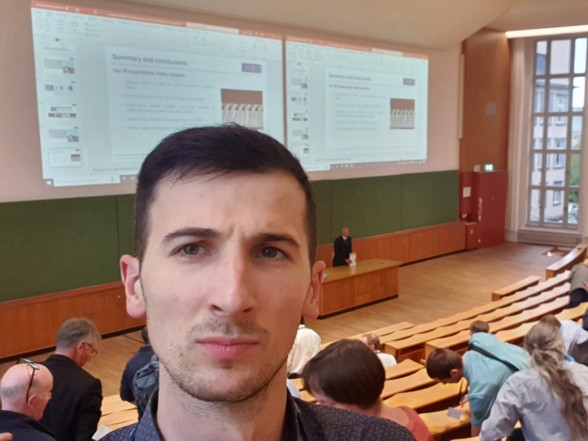On April 10, representatives from European universities’ business incubators participating in the Green Hexagon Project visited the Institute of Solid State Physics, University of Latvia (ISSP UL). The primary objective of the visit was to explore potential synergies and collaboration opportunities that align Green HExagon’s sustainability goals with the extensive expertise of ISSP UL in materials science and nanotechnology.
Discussions were centered on specific areas of collaborative research and development initiatives. These included material characterization and development, micro and nanodevice fabrication, technology transfer and commercialization, and joint funding applications for research projects related to sustainable materials and technologies.
Following these discussions, the Green HExagon representatives toured ISSP UL’s Laboratory of Optical Materials, which specializes in luminescence and other optical phenomena in various materials, as well as the Micro and Nanodevices Laboratory, which conducts research and fabrication of diverse microdevices and nanostructures, such as microfluidic devices, photonic devices, and 2D materials. These microdevices and structures are crucial for investigating new materials, biological processes, and physical phenomena and developing innovative products.
The Green HExagon is a 4-month online pre-incubation program aimed at supporting the development of green ideas for forward-thinking entrepreneurs, students, and researchers. It offers guidance from international experts and mentors in the context of a cross-border collaboration involving four universities: the University of Latvia (Latvia), Rīga Stradiņš University (Latvia), University of Tartu (Estonia), and the University of Applied Sciences Wiener Neustadt (Austria). The initiative focuses on enhancing work capacities through experience exchange, fostering a community for effective collaboration across sectors, and facilitating growth and transformation at individual, organizational, and sectoral levels. It emphasizes six key aspects: development, skills, collaboration, business, innovation, environment, and climate.



